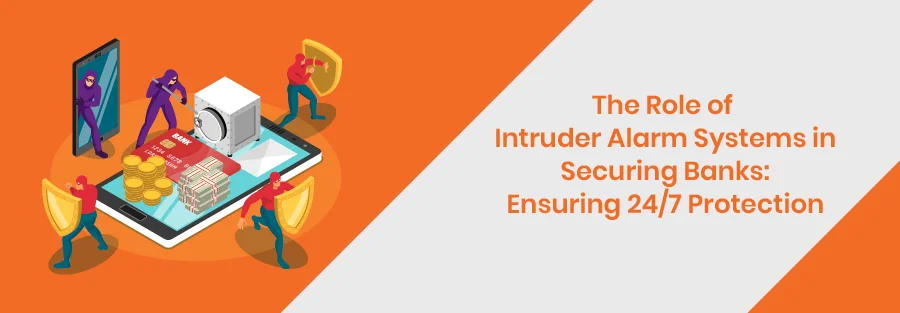In the modern era, safeguarding the security of banks has become a matter of utmost significance. With an increasing number of physical threats looming, it is imperative for financial institutions to establish formidable security measures. Among these vital components, the Intruder Alarm System stands as a crucial element. This blog post aims to explore the profound significance of Intruder Alarm Systems with 24/7 video surveillance in fortifying banks against potential breaches and guaranteeing unwavering protection at all hours.
Table of Contents
TogglePhysical Threats Faced by Banks:
Break-ins and Unauthorised Access
Banks, being repositories of valuable assets, are often targeted by criminals for break-ins and unauthorised access. Intruders may attempt to gain entry into restricted areas, compromise sensitive data, or carry out illegal activities. These systems play a vital role in detecting and deterring such threats, forming an integral component of a banking security system.
Theft and Robbery
Theft and robbery incidents pose a significant risk to banks. Criminals may target cash holdings, valuable assets, or even harm bank employees and customers. These systems provide an early warning, allowing prompt response and minimising the risk of loss. An effective security alarm system for banks ensures such events are prevented through rapid alerts and interventions.
Vandalism and Property Damage
Vandalism and property damage can disrupt bank operations and impact customer trust. Vandals may deface property, destroy equipment, or disrupt services. These systems help in detecting such activities, allowing quick action to mitigate potential damage. This holistic approach, when integrated with banks security systems, ensures banks can maintain operational integrity.
Understanding Alarm Systems:
Definition and Function
These systems are designed to detect unauthorised entry or suspicious activities within a secured area. They consist of various components working together to ensure comprehensive security coverage.
Components of Alarm Systems
- Sensors and Detectors:
- Door and window sensors
- Motion detectors
- Glass-break sensors
- Vibration sensors
- Two-way audio system
- Audible and visual indicators to alert occupants and deter intruders
- Sirens, bells, or flashing lights that activate upon alarm activation
Benefits of Alarm Systems for Banks:
Detection and Alerting
They provide early detection of unauthorised access or suspicious activities, enabling a rapid response. Instant alerts to security personnel allow immediate action, reinforcing the effectiveness of a comprehensive banking security system.
Deterrence and Prevention
When choosing a video monitoring system for your warehouse, consider scalability and future-proofing. Select a system that can grow with your warehouse’s needs and integrate with emerging technologies. Investing in a flexible and compatible system ensures that your security solution remains effective as your warehouse evolves, mirroring the flexibility of banks security systems.
Rapid Response and Mitigation
These systems enable swift response from security personnel, law enforcement agencies, or private security firms. Prompt action can be taken to address the situation, minimising potential harm and protecting assets. A security alarm system for banks not only detects but also prevents incidents proactively.
Integration with Other Security Measures
These systems can be integrated with other security systems such as Video Surveillance, access control, and security personnel protocols. This integration provides a comprehensive security solution, enhancing the overall effectiveness of the security measures and contributing to robust banks security systems.
Implementing Alarm Systems in Banks:
Customised Solutions
Each bank has unique security requirements, necessitating customised solutions. Working with experienced security providers, banks can tailor the system to their specific needs and ensure optimal protection.
Professional Installation and Maintenance
To guarantee the proper functioning of these systems, professional installation and regular maintenance are essential. Trained technicians ensure correct placement of sensors, optimal system configuration and timely repairs or upgrades.
Staff Training and Emergency Protocols
Bank staff should be trained in the proper use of these systems and emergency response protocols. Regular drills and training sessions enhance preparedness and ensure an effective response in case of an alarm activation.
Conclusion:
These systems, combined with 24/7 video surveillance, play a vital role in securing banks against physical threats. By detecting unauthorised access, deterring criminals, and enabling a swift response, they ensure 24/7 protection of high-value bank assets, staff, and customers.
Implementing customised solutions and professional installation are crucial steps to maximise the effectiveness of these systems. With the right banks security systems and banking security system in place, banks can instil confidence in their customers and uphold their reputation as safe and secure financial institutions.



